The rainy season is approaching. It reminded us of this in a torrential, stentorian sort of way over the weekend. In case we hadn't been paying attention.
On Saturday, seventeen of us rose at the crack of ungodly to head out to the Bong Mines. It was a gorgeous morning, clear and cool (in a manner of speaking...this is equatorial Africa, after all). We piled into the two oldest Land Rovers in Mercy Ships' fleet and struck out for the sole functioning train in the entire country.
The train we were headed towards was built a few decades ago, specifically for the transport of iron ore, and is therefore unused to passengers. There is, however, one passenger carriage, for the president should she decide to make the ride. Otherwise, it's you, your Land Rovers, a few bulldozers, and some tanks of carbon dioxide, all piled onto flat-bed cars and pulled behind one of the only two engines that still work in this country (unless it's last weekend, in which case that number is reduced. To one.)
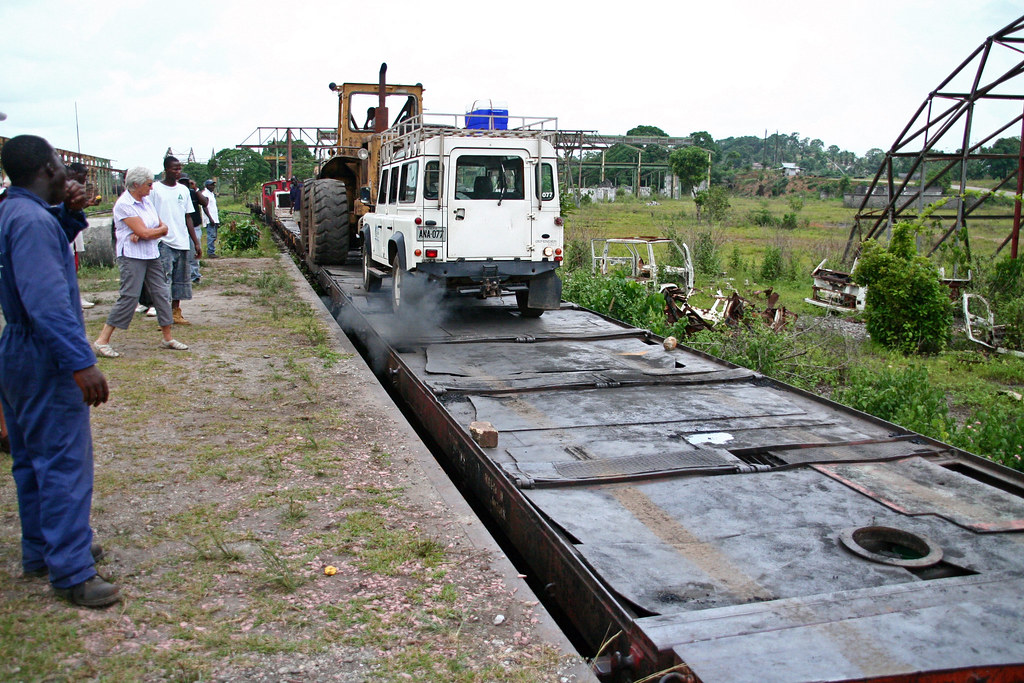
We maneuvered our cars onto the flatbeds, climbed on top of them, and watched. It's a two-hour, eighty-kilometer ride to Bong county and its mines, past rainforest, past villages with children screaming for your attention and waving with all their hearts, past brick-and-corrugated-tin houses as you leave Monrovia, then thatch-and-mud as you get further out. And then, just thatch, propped up with a few well-placed sticks.
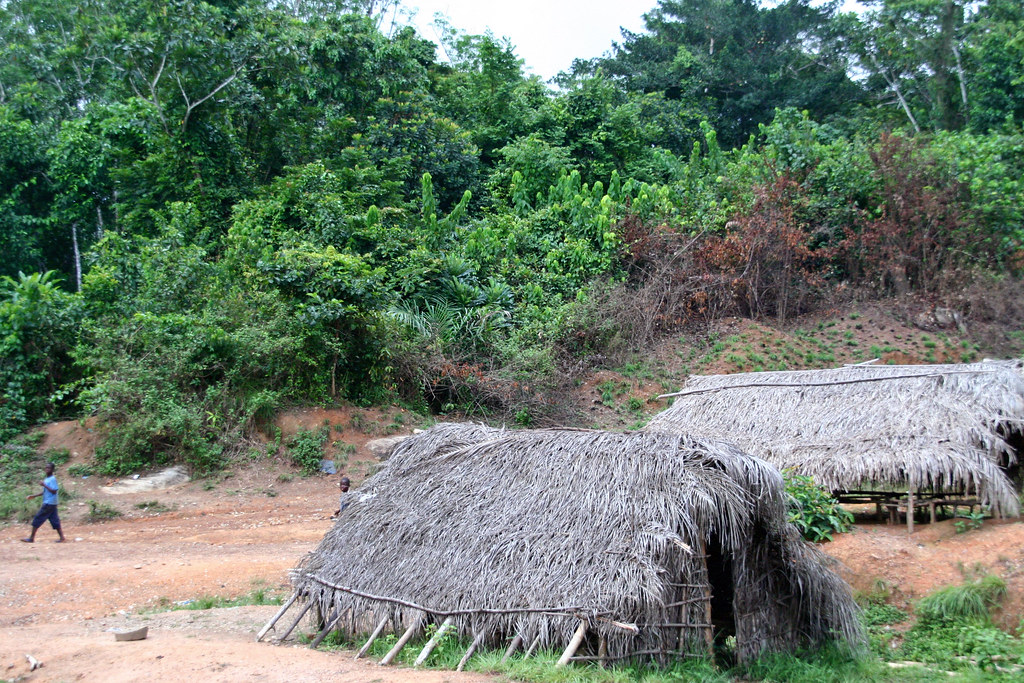

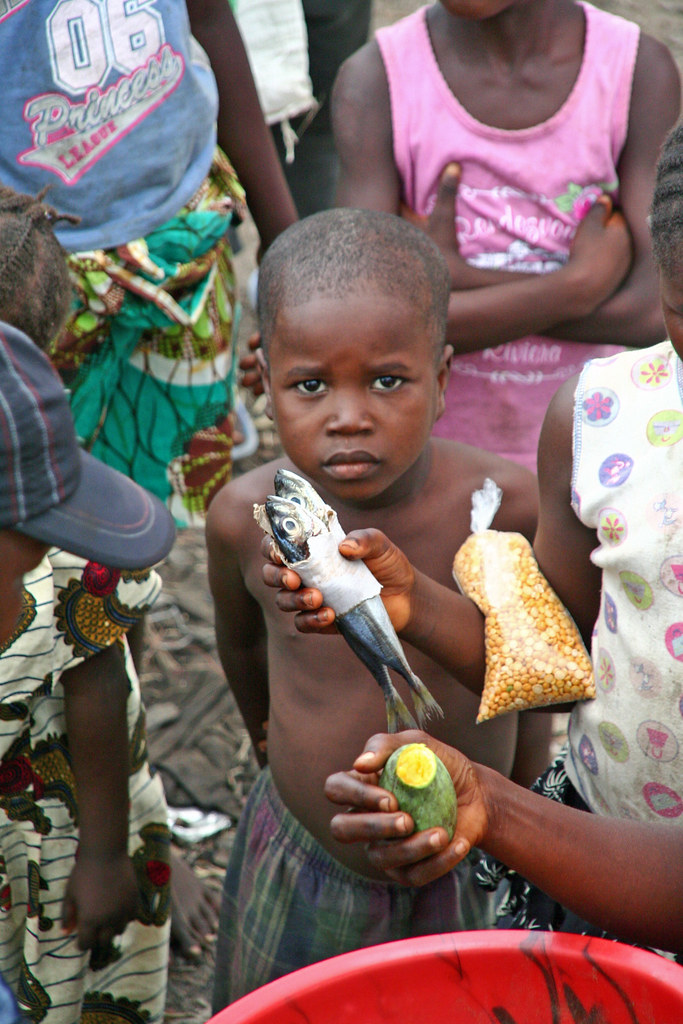

Like so much else in this country, the Bong Mines themselves are a testament to inhumanity. They started grandly: in 1958, the Republic of Liberia signed a deal with a group called DELIMCO, of which the Republic of Liberia was a part (along with some German steel companies), giving DELIMCO the right of prospecting and mining for 70 years. Yes: the Liberian government actually signed a deal with itself, allowing itself to mine itself for seventy years. And somehow, Germans were involved. I'm not making that up.
In 1961, the Bong Mining Company was set up. This time, it also included some Italians. But, don't you worry. The Bong Mining Company merged with DELIMCO about a decade later. Just to confuse you more.
By 1965, the Mines themselves were fully operational, and, at their height, produced seven million metric tons of iron per year from their pits, housed nearly 1500 souls in a nearby township, had a beautiful hospital, port, and railroad, and contained the largest single electricity generator in the world.
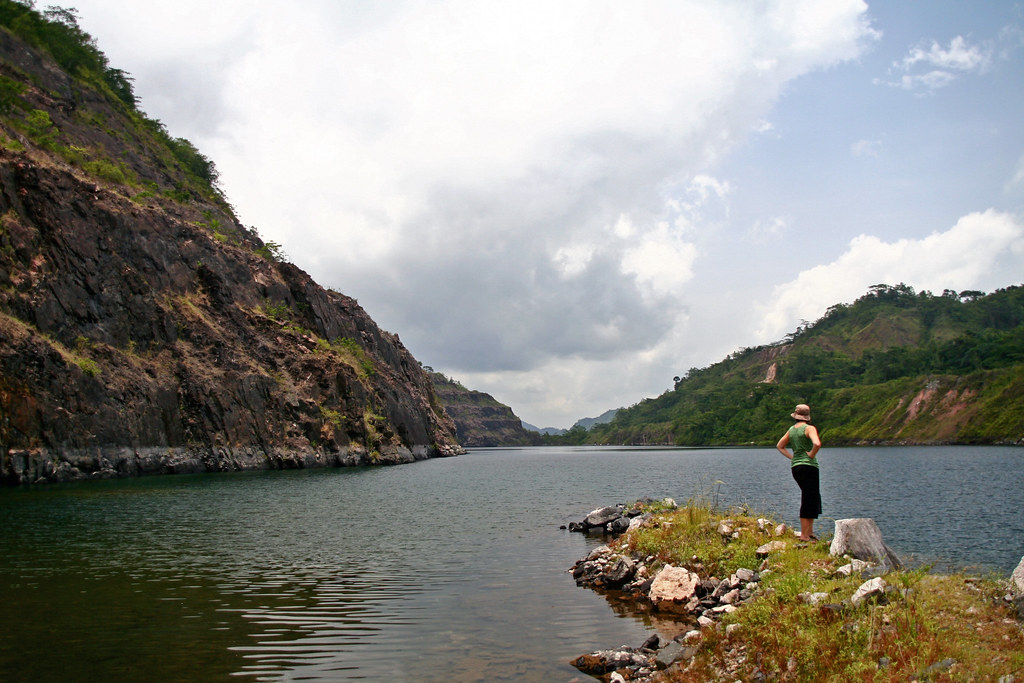
And then, the forces of Charles Ghankay Taylor came. Our guide to the Mines was a day-worker from the ship, a man named Odecious. By the time Taylor's forces overran the mines, 228 of the expat workers had already been airlifted out by the German air force, but Odecious—and most of the Liberian workers—was still there.
July 6, 1990, he told us. They were working when the rebels arrived. All that work ceased under the butt of a gun, and all the Liberians were gathered for a "screening" (his word). This screening determined your right to continue living. And this right was contingent on the tribe into which you were born.
If you were Krahn, you never made it out. If you were Grio, you did. If you were Mandingo, the bullets silenced you. If you were Mano, you were relieved.
See—bear with me; this makes Rwanda seem straightforward—Samuel Kanyon Doe, then the president of Liberia, and a man supportedly massively by the United States, was a Krahn. So, by default, if you were of his tribe, you were no longer worthy to walk the earth. And since certain Mandingo people worked with certain Krahn, the Mandingo had to be exterminated as well. Naturally.
Charles Taylor, the rebel leader and future president, was a Grio, and God smiled on all Grio. Again, naturally. The Mano helped the Grio, and we've already learned how God feels about the Grio. Innocence by association.
On that day, each Liberian had to go through two layers of inspection. The first was a mass screening, carried out by the overtaking soldiers. Its purpose was to weed out all the grossly, obviously tainted. If you somehow made it past that, you were sent to the main gate, on your way out of the mines. There, you had to be vetted again by the head of the rebel contingent himself. His job was to ensure that no Krahn or Mandingo surreptitiously made his way out, dressed in Grio clothing. God forbid. If he didn't like your smile, your accent, the way you shook hands, you simply never stepped over that gate's threshold.
Some 1000 people died in the mines on that day. We went to the field where they were killed. There are still bullet casings on the ground.

And this was the death of the Mines. They are now being dismantled by an American company, to be sold as scrap metal in the US, while a South African company builds a new mine some miles hence, to transport the iron ore, on Chinese-made roads, into the hands of the Americans, British, Chinese, and South Africans (the Israelis get the diamonds; we're not sure what they're giving in exchange). The enterprising few Liberians who will get anything out of this are the ones furtively gathering pieces of scrap on their own, balancing them on their heads, and walking to the nearest market, to sell them for whatever they can get.
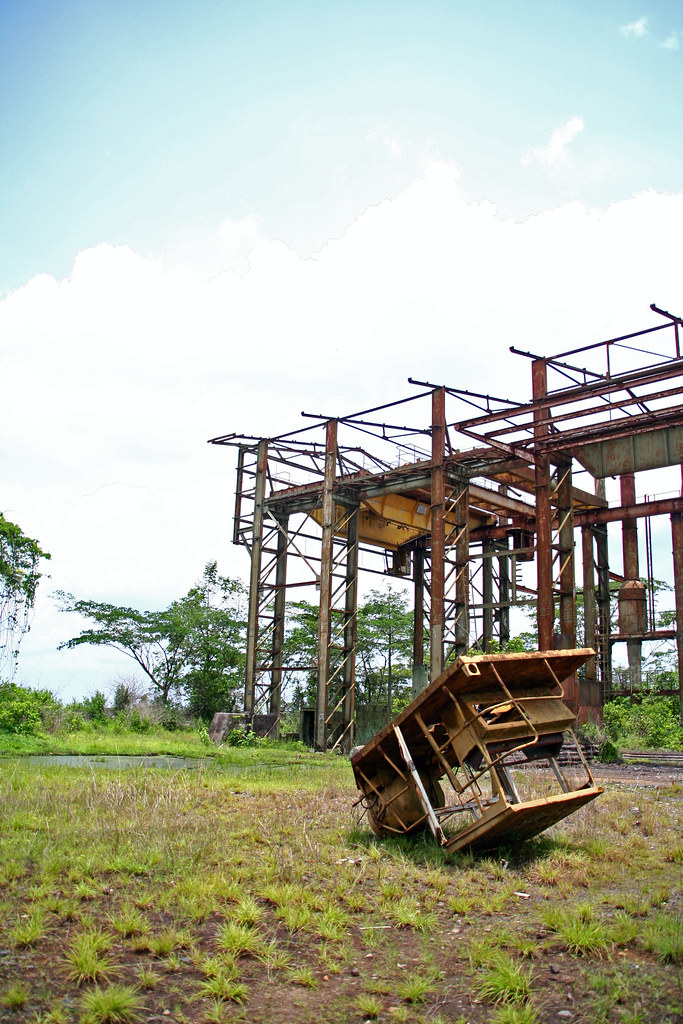
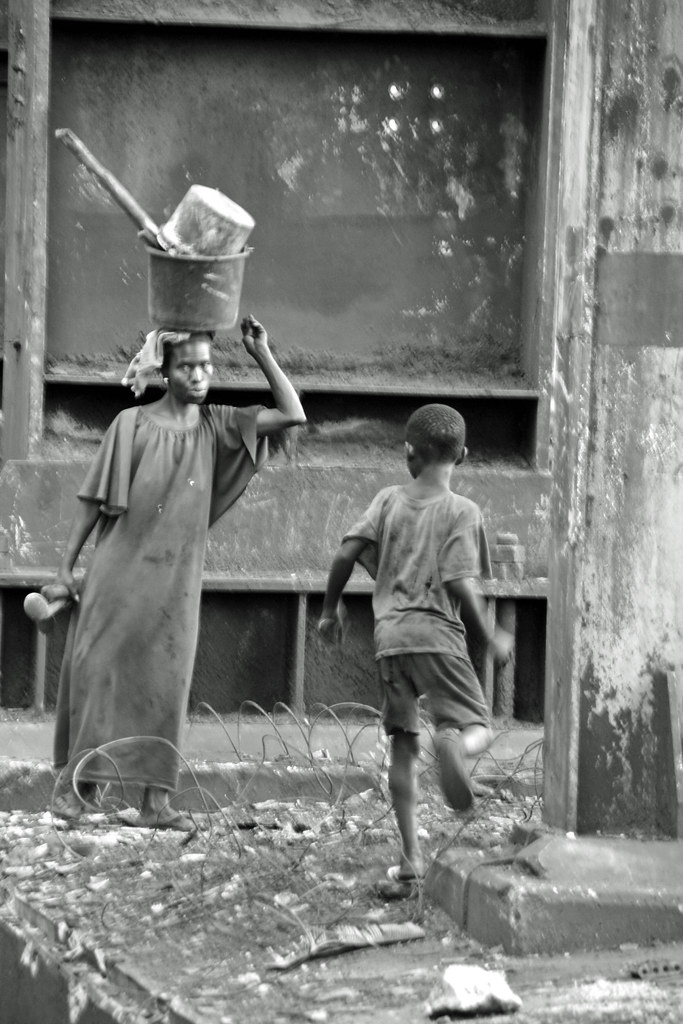
So, the mines are no more. The pits they dug are now a pristine lake (unswimmable unfortunately, thanks to some nasty schistosomes, which, by the way, are just as vulgar as they sound). The beautiful hospital still stands, staffed—we were told—by a physician, a surgeon, and three PAs. None were working the day we visited—which probably irked the three emergency room patients, who composed the sum-total of the occupants of the hospital. One had an IV in. I'm not exactly sure how.
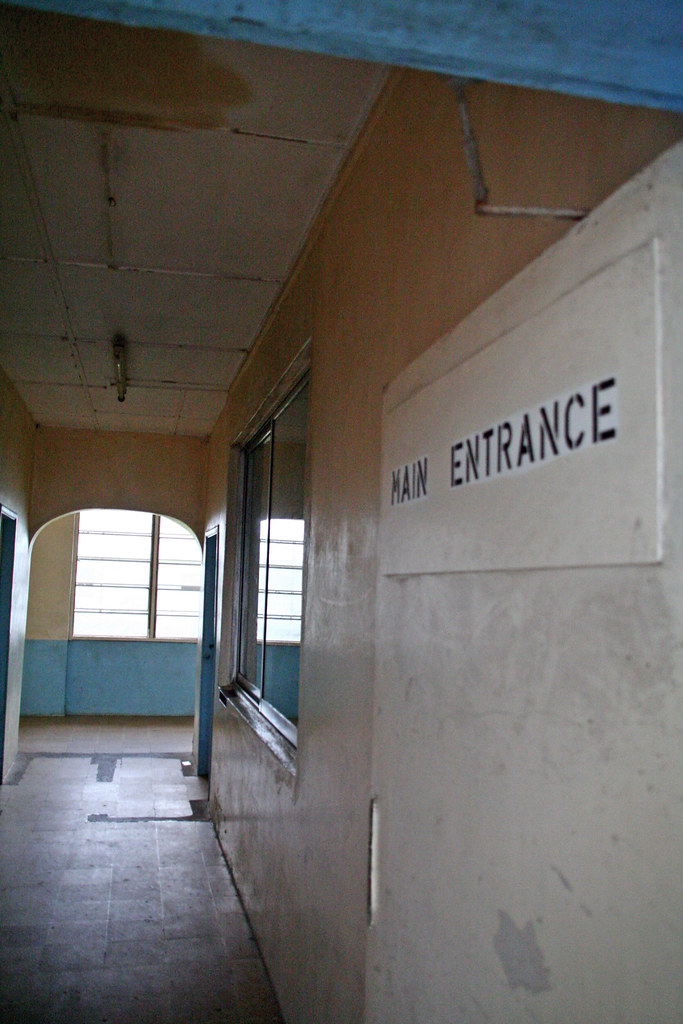
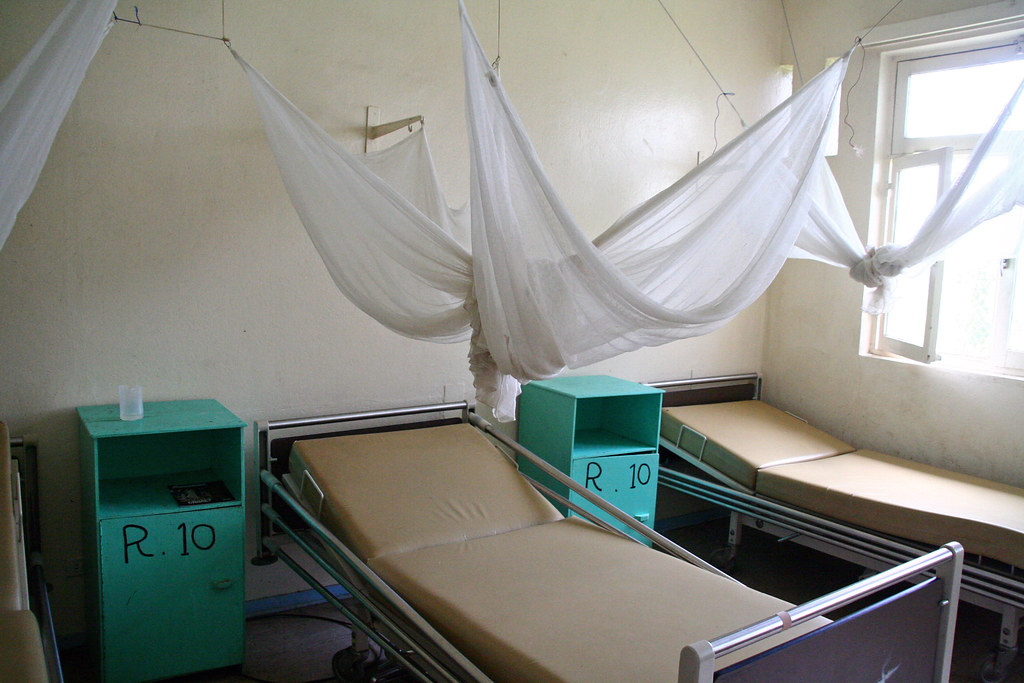

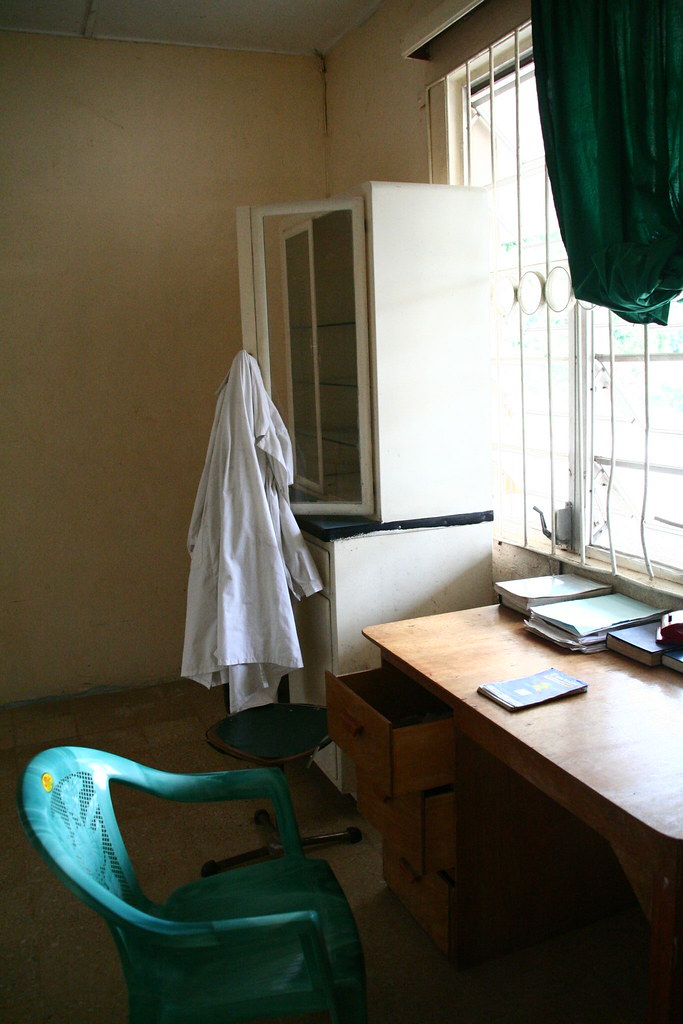
See, the hospital is free. Except that it's not. Except that you have to pay for everything, below-board, and in small, greasy-palmed increments. Except that, without money, you are left—like Victor, a nineteen-year-old boy who had been in a car accident two weeks previously—to lie perfectly still on the porch of a neighbor's house as an infection slowly creeps its way up your body from a purulent, draining leg, transforming a simple fracture into near-certain death. Simply because a hospital turned over to people pulled so recently from desperation allows money to flow freely from the open wound of one man to the pockets of another.
Victor sobered us. The mood on the way back started quiet. But when the skies opened up, and we realized that there were no screws securing the three slats of metal that made up the roof of our Land Rover to each other, the cataracts of water that flooded the back of the car were an awakening. Victor was on his way, on our train, to a hospital in Monrovia. The rain was a brief tropical storm.
And we...well, we were returning home, under the pinks and yellows of a setting African sun.
On Saturday, seventeen of us rose at the crack of ungodly to head out to the Bong Mines. It was a gorgeous morning, clear and cool (in a manner of speaking...this is equatorial Africa, after all). We piled into the two oldest Land Rovers in Mercy Ships' fleet and struck out for the sole functioning train in the entire country.
The train we were headed towards was built a few decades ago, specifically for the transport of iron ore, and is therefore unused to passengers. There is, however, one passenger carriage, for the president should she decide to make the ride. Otherwise, it's you, your Land Rovers, a few bulldozers, and some tanks of carbon dioxide, all piled onto flat-bed cars and pulled behind one of the only two engines that still work in this country (unless it's last weekend, in which case that number is reduced. To one.)

We maneuvered our cars onto the flatbeds, climbed on top of them, and watched. It's a two-hour, eighty-kilometer ride to Bong county and its mines, past rainforest, past villages with children screaming for your attention and waving with all their hearts, past brick-and-corrugated-tin houses as you leave Monrovia, then thatch-and-mud as you get further out. And then, just thatch, propped up with a few well-placed sticks.




Like so much else in this country, the Bong Mines themselves are a testament to inhumanity. They started grandly: in 1958, the Republic of Liberia signed a deal with a group called DELIMCO, of which the Republic of Liberia was a part (along with some German steel companies), giving DELIMCO the right of prospecting and mining for 70 years. Yes: the Liberian government actually signed a deal with itself, allowing itself to mine itself for seventy years. And somehow, Germans were involved. I'm not making that up.
In 1961, the Bong Mining Company was set up. This time, it also included some Italians. But, don't you worry. The Bong Mining Company merged with DELIMCO about a decade later. Just to confuse you more.
By 1965, the Mines themselves were fully operational, and, at their height, produced seven million metric tons of iron per year from their pits, housed nearly 1500 souls in a nearby township, had a beautiful hospital, port, and railroad, and contained the largest single electricity generator in the world.

And then, the forces of Charles Ghankay Taylor came. Our guide to the Mines was a day-worker from the ship, a man named Odecious. By the time Taylor's forces overran the mines, 228 of the expat workers had already been airlifted out by the German air force, but Odecious—and most of the Liberian workers—was still there.
July 6, 1990, he told us. They were working when the rebels arrived. All that work ceased under the butt of a gun, and all the Liberians were gathered for a "screening" (his word). This screening determined your right to continue living. And this right was contingent on the tribe into which you were born.
If you were Krahn, you never made it out. If you were Grio, you did. If you were Mandingo, the bullets silenced you. If you were Mano, you were relieved.
See—bear with me; this makes Rwanda seem straightforward—Samuel Kanyon Doe, then the president of Liberia, and a man supportedly massively by the United States, was a Krahn. So, by default, if you were of his tribe, you were no longer worthy to walk the earth. And since certain Mandingo people worked with certain Krahn, the Mandingo had to be exterminated as well. Naturally.
Charles Taylor, the rebel leader and future president, was a Grio, and God smiled on all Grio. Again, naturally. The Mano helped the Grio, and we've already learned how God feels about the Grio. Innocence by association.
On that day, each Liberian had to go through two layers of inspection. The first was a mass screening, carried out by the overtaking soldiers. Its purpose was to weed out all the grossly, obviously tainted. If you somehow made it past that, you were sent to the main gate, on your way out of the mines. There, you had to be vetted again by the head of the rebel contingent himself. His job was to ensure that no Krahn or Mandingo surreptitiously made his way out, dressed in Grio clothing. God forbid. If he didn't like your smile, your accent, the way you shook hands, you simply never stepped over that gate's threshold.
Marble statues and glass dividers
Someone is watching all of the outsiders
The line moves slowly through the numbered gate
Past the mosaic of the head of state
Some 1000 people died in the mines on that day. We went to the field where they were killed. There are still bullet casings on the ground.

And this was the death of the Mines. They are now being dismantled by an American company, to be sold as scrap metal in the US, while a South African company builds a new mine some miles hence, to transport the iron ore, on Chinese-made roads, into the hands of the Americans, British, Chinese, and South Africans (the Israelis get the diamonds; we're not sure what they're giving in exchange). The enterprising few Liberians who will get anything out of this are the ones furtively gathering pieces of scrap on their own, balancing them on their heads, and walking to the nearest market, to sell them for whatever they can get.


So, the mines are no more. The pits they dug are now a pristine lake (unswimmable unfortunately, thanks to some nasty schistosomes, which, by the way, are just as vulgar as they sound). The beautiful hospital still stands, staffed—we were told—by a physician, a surgeon, and three PAs. None were working the day we visited—which probably irked the three emergency room patients, who composed the sum-total of the occupants of the hospital. One had an IV in. I'm not exactly sure how.




See, the hospital is free. Except that it's not. Except that you have to pay for everything, below-board, and in small, greasy-palmed increments. Except that, without money, you are left—like Victor, a nineteen-year-old boy who had been in a car accident two weeks previously—to lie perfectly still on the porch of a neighbor's house as an infection slowly creeps its way up your body from a purulent, draining leg, transforming a simple fracture into near-certain death. Simply because a hospital turned over to people pulled so recently from desperation allows money to flow freely from the open wound of one man to the pockets of another.
Victor sobered us. The mood on the way back started quiet. But when the skies opened up, and we realized that there were no screws securing the three slats of metal that made up the roof of our Land Rover to each other, the cataracts of water that flooded the back of the car were an awakening. Victor was on his way, on our train, to a hospital in Monrovia. The rain was a brief tropical storm.
And we...well, we were returning home, under the pinks and yellows of a setting African sun.
As always, the remaining pictures are here.
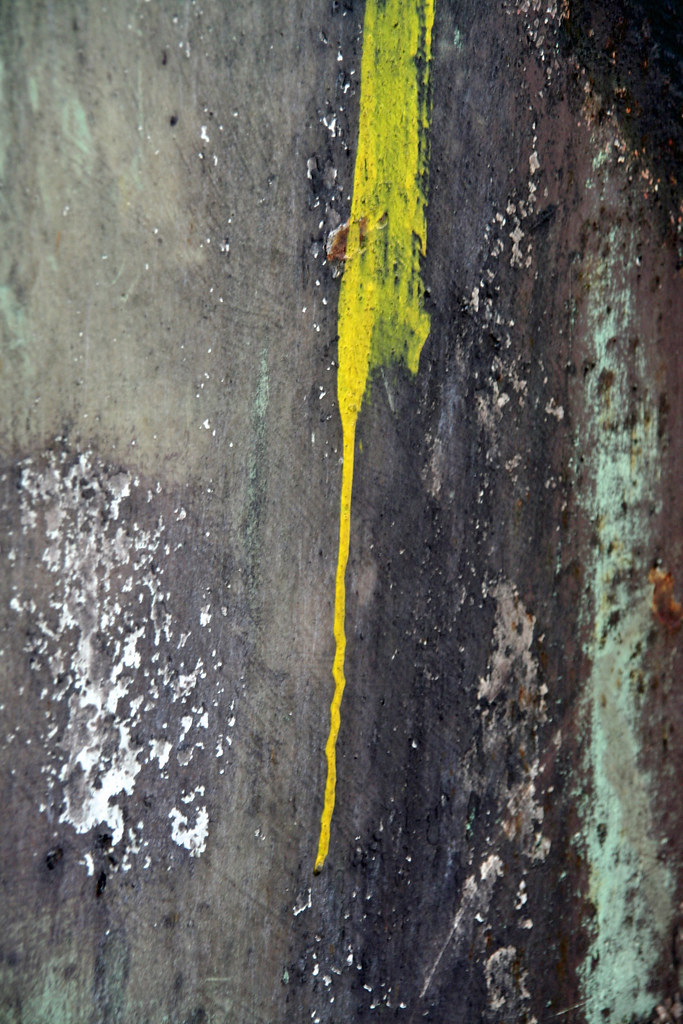





No comments:
Post a Comment